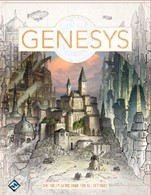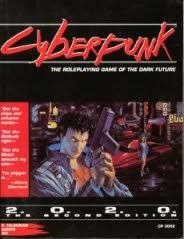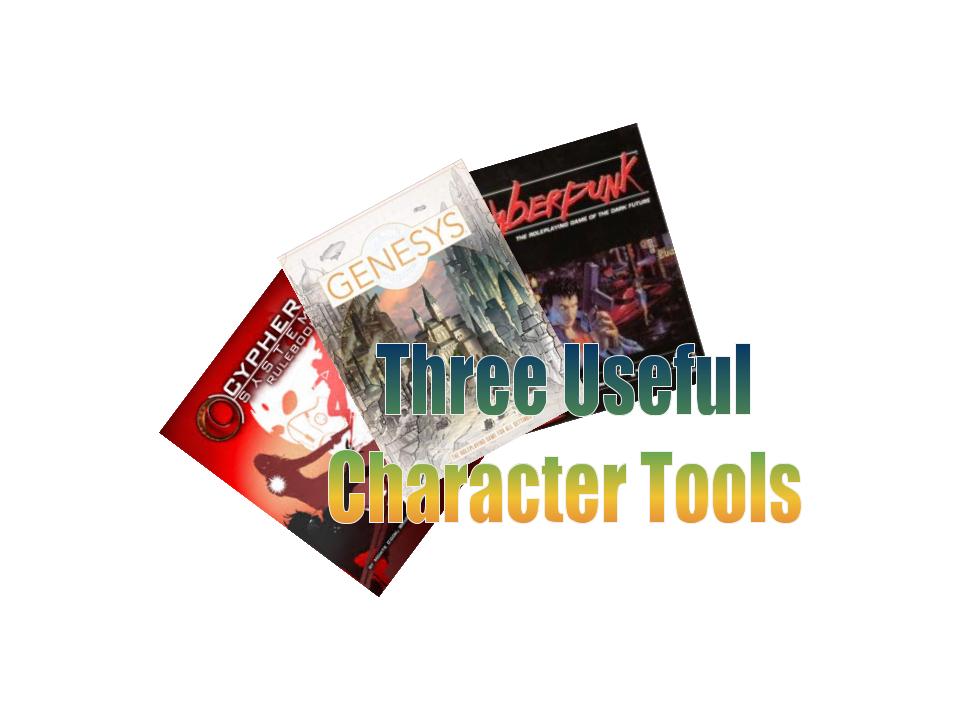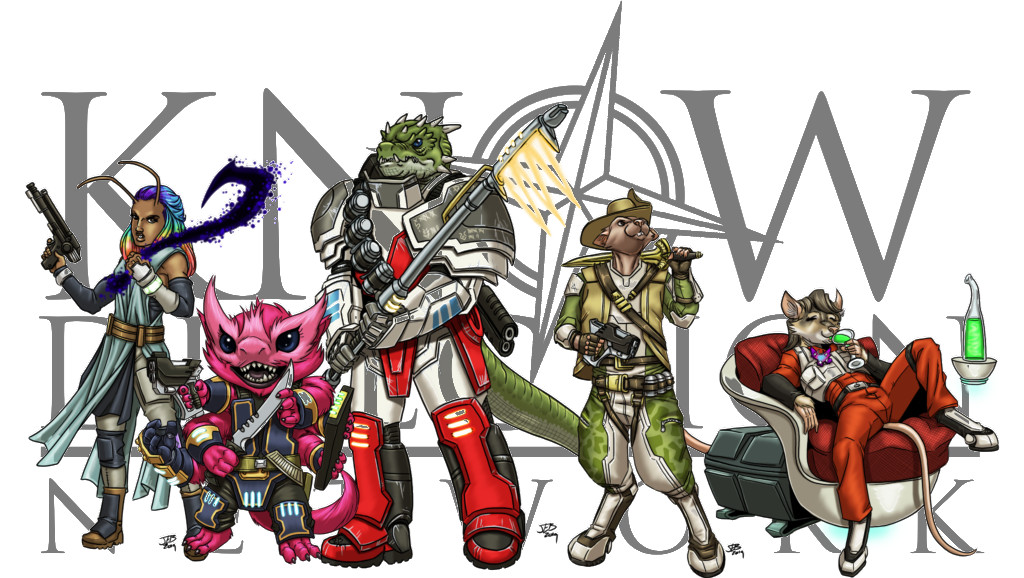We’ve talked about character backgrounds several times on this blog the most recent was at the beginning of October when we discussed how players can work plot hooks into their backstories. This week I thought I’d suggest some tools from other systems that players and GMs both can utilize to add characters during your session zero. This isn’t a comprehensive list of great character tools but it does provide a starting point. GMs and players
 1. Character Motivations, Genesys
1. Character Motivations, Genesys
First up let’s talk Genesys. Fantasy Flight’s setting agnostic rules set is a modified version of their Star Wars RPG line. I’ve talked about this game several times on this blog because frankly I love the narrative dice mechanics. But today we’re not talking about the dice but the motivation system.
In Genesys’s motivation system each character gets a desire, a fear, a strength, and a flaw. These four aspects are the primary drivers of the character’s actions. If a player can’t decide on one or more of these there is a reasonably comprehensive table of suggestions that can be randomly rolled. I’ve found that just quick rolling random options gave me some pretty interesting character concepts for one shot pregen characters.
So what constitutes these four personality traits? Let’s look at the rules for a portion of the description for each.
Desire: “The Desire aspect of your character tracks most closely with what we typically think of when we hear the term “motivation”: it’s the reason why the character acts. What, more than anything else, does your character want or want to achieve?”
Fear: “A character’s Fear represents the thing they dread. It might be the character’s deepest insecurity, their bogeyman, or a deep-seated threat to their culture or life.
Strength: “Your character’s Strength is one of the best things about them. It’s the first thing you’d put on your character’s résumé, the one word other people use when praising your character, and the defining feature that they’re known for.”
Flaw: “Everyone has an element of themselves that they’re not proud of. Why should your character be any different? When someone speaks ill of your character, this is always the first thing they bring up. It’s also what gets mentioned when your character’s friends say ‘They’re a great person, but…’ That ‘but’ is your character’s Flaw.”
The Genesys rules offer a lot more detail than the snippets I’ve quoted here but it should be enough to give you an idea of how this can be integrated into your session zero notes.
 2. Life Path, Cyberpunk 2020
2. Life Path, Cyberpunk 2020
In the 90’s my group played several different games but we spent most of our time playing R. Talsorian’s Cyberpunk games. One of the hallmarks of character creation was rolling on the Life Path tables. The Life Path was a series of interlocked tables that helped generate your character’s background. There were good results such as allies and windfalls as well as bad results such as enemies.
Over the years we’ve adapted the tables for play in a number of campaigns in other systems (mostly AD&D). In a Pathfinder campaign a GM could build a table that serves the campaign’s needs granting access to certain feats, archetypes, etc. that may be rarity locked in second edition.
 3. Character Arcs, Your Best Game Ever and the Cypher System
3. Character Arcs, Your Best Game Ever and the Cypher System
Monte Cook Games ran a recent Kickstarter for a system agnostic guide for GMs and players of any RPG included in the advice is a section on character arcs. This same system appears in the revised Cypher system core rulebook.
Character Arcs help improve player investment as well as character depth and development. Think of character arcs as the personal development stories we see in television characters such as Data’s drive to be more human on Star Trek the Next Generation, Raymond “Red” Redington’s mysterious interest in Elizabeth Keen at the onset of The Blacklist. If you opt to use this system players should select an arc to pursue.
Each arc is comprised of four or more stages, an Opening, Step(s), Climax, and Resolution. Let’s look at the summary of the purpose of each of the stages of an arc.
“Opening: This sets the stage for the rest of the arc. It involves some action, although that might just be the PC agreeing to do the task or undertake the mission. It usually has no reward.
Step(s): This is the action required to move toward the climax. In story terms, this is the movement through the bulk of the arc. It’s the journey. The rising tension. Although there might be just one step, there might also be many, depending on the story told. Each results in a reward of 2 XP.
Climax: This is the finale—the point at which the PC likely succeeds or fails at what they’ve set out to do. Not every arc ends with victory. If the character is successful, they earn a reward of 4 XP. If they fail, they still earn a reward of 2 XP. If a character fails the climax, they very likely ignore the resolution.
Resolution: This is the wrap-up or denouement. It’s a time for the character to reflect on what happened, tie up any loose ends, and figure out what happens next. When things are more or less resolved, the character earns a 1 XP reward.”
Now the Cypher System only requires PCs to have 4xp to increase a character’s capabilities and 16xp to advance a tier which is far less than a Pathfinder PC (of either edition) so a GM would have to adjust the rewards for completing an arc. For a second edition game I’d recommend 125 XP for each step, 250 XP for the Climax and 75 XP for the Resolution.
Both books have a long list of sample arcs that are suitable for nearly any setting.
As I said at the onset this is not intended to be a remotely comprehensive list of resources you can adapt to your next campaign. If you have a favorite tool for developing characters drop it in the comments.








Very interested in the Life Path tables, thanks!